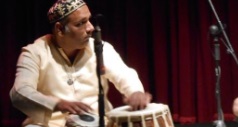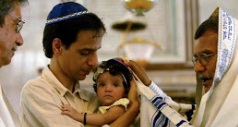KENESETH ISRAEL SYNAGOGUE (1876)
Talley Ghosaley
Mangaon Tehsil
Raigad District, Konkan Region
Maharashtra, INDIA
This Raigad District/Konkan Region synagogue is today closed and locked. For a visit to the building, tourists need to arrange in advance via the Mumbai Bene Israel community. There is no contact number or email for this building site. Contact this website for possible assistance. To reach this former synagogue and the nine others throughout the sprawling and picturesque Konkan Region, it is best to hire a car and driver from Mumbai for two full days. There is a convenient ferry that takes passengers from Mumbai’s Gate of India to Alibag in the Konkan Region. Here travelers would have to arrange for private transportation to this and other regional synagogues, which will be challenging since finding someone near the ferry jetty who knows where they are all located is difficult. The alternative is to begin in Mumbai via informed car and driver, and travel all by roads. This is the longer option but will insure that all the synagogues can be reached. For the overnight stay, the comfortable Radisson Hotel on Alibag-Pen Road, Gondhalpada, Varasoli, Alibag, Raigad is suggested.
Keneseth Israel (Hebrew for Gathering of Israel) Synagogue, in the village of Ashtami in Roha Tehsil, is one of the ten Bene Israel synagogues still found in the Raigad District within the Konkan Region of coastal Maharashtra. The congregation dates to 1849, and the first synagogue to serve them was realized in 1852. That building burned, and in 1876 at second structured was constructed.
Located near the center of the village and surrounded by other residential and small commercial structures, the synagogue is a two-story structure, and it sits on a low base. The building is constructed out of crude structural bricks that have been veneered in chunam (polished lime), a wooden roof framing system, and clay ceramic tiles. The façade of the synagogue contains a recessed porch at the ground level (fronted by painted wooden balusters and a gate) and an upper level featuring three small painted shuttered windows. This upper level is the women’s gallery. The façade also features an inscription panel, and the entire façade is crowned by a curvilinear, swooping form. This crown is the building’s most decorative and prominent element.
The rectangular sanctuary follows the planning of other Bene Israel synagogues with its centrally-positioned tebah (bimah, or an area containing a reader’s platform from where the Torah is read) and to the far wall the heckal (ark). The tebah, fabricated out of wood and painted, is a raised platform typical to other Bene Israel and other synagogues in India. Placed in the center of the western elevation that is closest to Jerusalem as per synagogue convention, the heckal is a raised-paneled wooden cabinet that is draped in the traditional cloth called the parochet. Flanking the heckal are two special chairs: one is for the prophet Elijah and the other used for the brit mila, or circumcision ceremony.
According to narratives passed down over the years, the Bene Israel Jews were ancient traders from the Middle East who for many years conducted business in India. Eventually they came to settle – perhaps more than two millennia ago – on a permanent basis primarily in small towns and villages in the Raigad District within the Konkan Region of coastal Maharashtra. They continued to live there for centuries as a disaporic Jewish enclave, following various Jewish customs and lifestyle practices amongst larger native Indian communities. Centuries later, beginning in late 1700s but especially by the mid-1800s, many of the Bene Israel relocated to Mumbai as well as Ahmedabad, Pune, and Karachi Pakistan when these colonial cities were expanding and offering job and lifestyle opportunities. All Bene Israel Jews did not leave the Raigad District, however. Beth El is an example of the thirteen Bene Israel congregations that were organized in this coastal region during the mid-to-last nineteenth century. In time, these small congregations erected proper synagogues to serve their religious and communal needs.
Beginning in the mid-twentieth century, as a result of political and social changes in India, the Bene Israel began to leave India mostly for Israel. At that point, the entire Bene Israel community numbered according to estimates some twenty thousand people. From this pattern of immigration, the Bene Israel population of Bene Israel dropped precipitously to a few thousand, and the number of Jews currently living Konkan Region is quite small. Of the thirteen synagogue buildings built in the assortment of towns and villages in this region from the mid-nineteenth to early twentieth centuries, only ten survive today. Of these is Beth El, which is no longer an active house of prayer but still stands as testament to this region’s extended Jewish history and its tradition of diversity and tolerance.

Exterior








